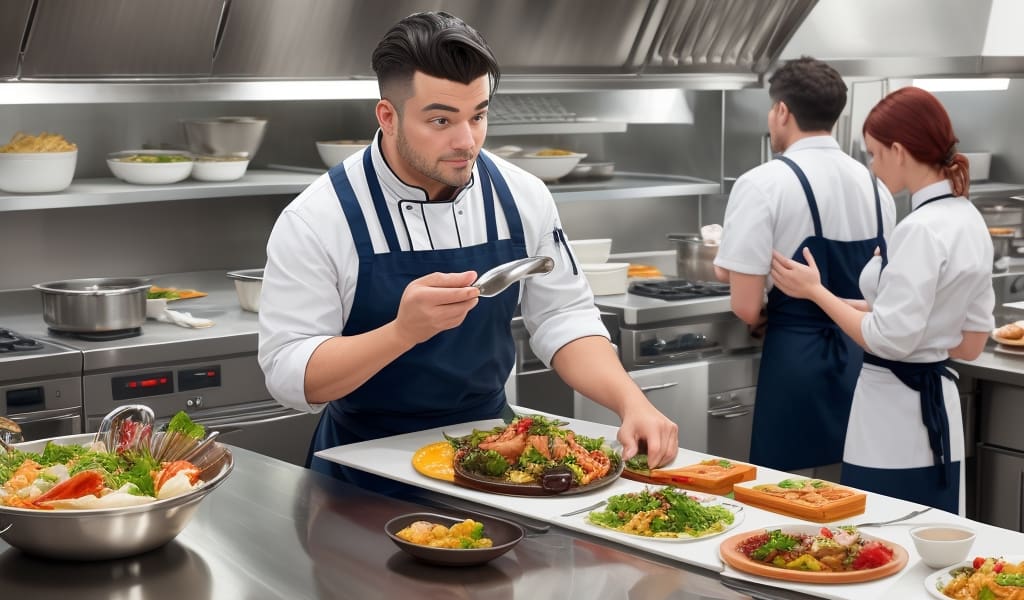Key Takeaways:
- Identify influencers who align with your restaurant’s brand and target audience for effective marketing.
- Utilize social media platforms to discover F&B creators with a substantial and engaged follower base.
- Develop a clear collaboration proposal that outlines mutual benefits before approaching potential influencers.
- Monitor the influencer’s content to evaluate their impact on your restaurant’s visibility, traffic, and sales.
- Maintain a professional and respectful relationship with influencers to foster long-term partnerships.
How to Find and Work With Influencers in the F&B Space
In today’s digital-driven environment, influencer marketing has emerged as a powerful strategy for restaurants looking to build their brand, attract new customers, and boost sales. Social media influencers, particularly those specializing in food and beverage content, can amplify your establishment’s visibility, connect you with a broader audience, and create authentic interest around your menu offerings. But how exactly can you find the right influencers and effectively collaborate with them? This article will provide practical, actionable guidance to help restaurant owners and managers navigate influencer marketing and establish mutually beneficial partnerships.
Why Influencer Marketing Matters for Restaurants
Influencer marketing leverages the popularity, reach, and trust that social media influencers hold with their followers. Unlike traditional advertising, influencers offer a human voice and genuine recommendations that resonate strongly with consumers. For restaurants, collaborating with F&B creators can lead to:
- Increased exposure to targeted, engaged audiences
- Enhanced credibility and trustworthiness of your brand
- Authentic content creation that showcases your restaurant’s unique ambiance and dishes
- Improved customer engagement and social media following
According to a recent study, over 70% of consumers are influenced by social media when choosing restaurants, underscoring the importance of incorporating influencer marketing into your restaurant branding strategy.
Identifying the Right Influencers for Your Restaurant
Choosing the right influencers is crucial to the success of your campaign. Here are steps you can follow to identify suitable F&B creators:
Define Your Target Audience Clearly
Before you start looking for influencers, clearly define your ideal customer demographic. Consider factors such as age, location, dietary preferences, lifestyle, and digital platforms they frequent. This clarity will help you pinpoint influencers whose followership aligns closely with your desired audience.
Research Influencers in Your Region
Local influencers often have significant impact within their communities. Begin your search by looking for creators in your city or neighborhood. Tools like Instagram’s location tags, hashtags, or influencer marketing platforms can simplify this process.
Evaluate Authenticity and Engagement
Follower count alone shouldn’t be your primary metric. Instead, focus on authenticity, engagement rates, and content quality. Genuine comments, consistent interaction, and high-quality, creative content indicate a trustworthy and effective influencer.
Align Influencer Values with Your Brand
Look for influencers who share similar values and aesthetics with your restaurant’s branding. Whether your establishment emphasizes sustainability, gourmet cuisine, family-friendly dining, or vegan options, the influencer you choose should organically align with these values to make the partnership authentic.
How to Approach Influencers and Establish a Partnership
Once you’ve identified suitable influencers, the next step is to approach them professionally and transparently.
Personalize Your Outreach
Avoid generic messages. Instead, personalize your communication by highlighting specific aspects of the influencer’s content that resonate with your brand. Clearly express why you believe the partnership would be mutually beneficial.
Clearly Outline Expectations
From the beginning, clearly communicate your expectations. Define the type of content you’d like, posting schedules, payment or compensation details, and specific goals of the collaboration. Clarity helps avoid misunderstandings and sets the partnership up for success.
Allow Creative Freedom
While it’s important to communicate your restaurant’s branding and goals, allow influencers enough creative freedom. Influencers understand their audience best, so trust their judgment on how to engage their followers authentically. Genuine content always performs better than overly scripted promotions.
Structuring an Effective Influencer Marketing Campaign
Creating an effective influencer campaign requires careful planning and execution. Use these guidelines to structure your campaign:
Set Clear Campaign Goals
Identify clear objectives such as increasing brand awareness, driving traffic to your restaurant, introducing a new menu item, or boosting sales during a particular period. Goals will guide the selection of influencers and content strategies.
Define a Realistic Budget
Influencer marketing costs can vary widely depending on their reach and engagement. Establish a realistic budget that reflects your campaign’s scope, considering influencers’ typical rates, content creation expenses, and any additional costs such as hosting influencer events or providing complimentary meals.
Create Incentives Beyond Financial Compensation
While monetary compensation matters, restaurants have additional incentives to offer, such as exclusive dining experiences, special menu tastings, or event invitations. These non-monetary perks often build deeper relationships with influencers and foster genuine enthusiasm.
Establish Clear Guidelines and Agreements
Prepare a clear contract or collaboration agreement that details responsibilities, deliverables, timelines, compensation, and usage rights. Formal agreements protect both parties and ensure everyone understands the terms upfront.
Measuring the Success of Your Influencer Campaign
Measuring the effectiveness of your influencer marketing efforts is essential for continuous improvement. Here are key performance indicators (KPIs) you can track:
- Social media engagement metrics (likes, comments, shares)
- Increase in follower count and social media interactions
- Website traffic or online reservations driven from influencer posts
- Use of promotional codes or offers provided by influencers
- Customer feedback mentioning influencer recommendations
Analyzing these metrics will help you understand the campaign’s impact and adjust future strategies accordingly.
Industry Examples of Successful Influencer Partnerships
Seeing how other restaurants effectively use influencer marketing can inspire your own campaigns. Here are two real-world examples:
Shake Shack’s Strategic Micro-Influencer Partnerships
Shake Shack successfully used micro-influencers to promote local store openings and new menu items. By partnering with local food bloggers and content creators, Shake Shack increased community awareness and drove foot traffic. The authenticity and genuine enthusiasm of local influencers resonated deeply with their audiences, leading to successful launches and brand loyalty.
Sweetgreen and Lifestyle Influencers
Fast-casual salad chain Sweetgreen collaborates regularly with health and wellness lifestyle influencers. This strategy effectively positions Sweetgreen as a healthy, trendy dining option. Influencers post visually appealing content featuring Sweetgreen’s salads, bowls, and beverages, fostering a clear brand identity and attracting health-conscious consumers.
Common Mistakes to Avoid in Influencer Marketing
While influencer marketing offers significant benefits, restaurants frequently make avoidable mistakes. Here are common pitfalls to avoid:
- Focusing solely on follower count: High follower counts don’t always translate into real influence. Engagement rates and authenticity matter more.
- Choosing influencers misaligned with your brand: Ensure influencers genuinely match your restaurant’s identity and values.
- Not clearly defining expectations: Ambiguity in expectations often leads to disappointment or ineffective campaigns. Always clearly communicate goals and deliverables.
- Ignoring performance metrics: Review data and analytics to assess effectiveness and refine future campaigns.
Conclusion
Influencer marketing has become an essential component of successful restaurant branding strategies, offering the opportunity to reach new audiences and enhance credibility through authentic recommendations. By clearly defining your target audience, carefully selecting influencers, approaching partnerships professionally, structuring effective campaigns, and measuring results, your restaurant can benefit significantly from collaborations with F&B creators. Embrace influencer marketing strategically, and you’ll strengthen your brand visibility, attract enthusiastic customers, and stay competitive in the dynamic restaurant industry.






Comments
Be the first to comment on this article.